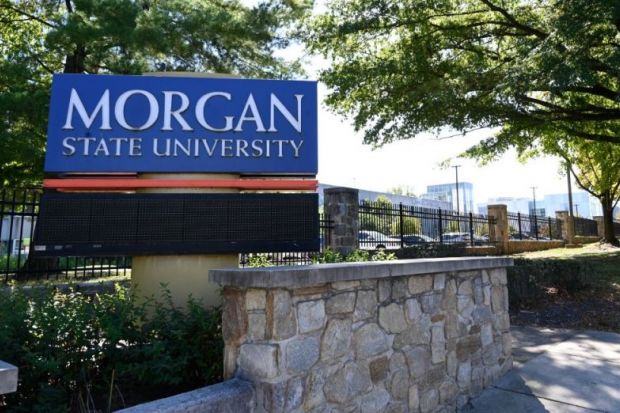One of the US’ leading historically black universities is pushing back against criticism of security plans, unveiled following a campus shooting that injured five people, that would largely encircle its grounds with a barrier from black-majority Baltimore.
Four students were among the five victims of the shooting earlier this month near one of Morgan State University’s six on-campus residential halls. Police have charged a 17-year-old man with multiple counts of attempted murder and issued an arrest warrant for an 18-year-old man also suspected of involvement.
Morgan State’s police chief, Lance Hatcher, responded to the shootings by suggesting the construction of a “wall” entirely around the 9,600-student campus in a largely residential section of north-east Baltimore.
The university’s president, David Wilson, expressed agreement with the general idea, saying he would ask state and federal lawmakers for $22 million (£18 million) in security upgrades, including $6 million for the barrier, to end “unfettered access” to the campus.
The idea, however, quickly drew criticism in a nation where the construction of barrier walls – in both academic settings and beyond – has assumed major political significance as a marker of privilege and exclusion. Morgan State, meanwhile, has been a leading voice for raising up historically black institutions, in part by setting a goal of becoming the first HBCU to join the R1 rank of the nation’s highest-tier research universities.
Morgan State also just celebrated the tearing-down in April of its “spite wall” – a 7-foot-high red-brick barrier running 1,200 feet along the western edge of the campus that was built in 1939 by the then-white-majority community living next to Morgan State to protest against the institution, then a college, getting its first black president.
After a few days of facing some questions and criticisms regarding the planned new wall, Dr Wilson and other university officials appealed for context, noting that fencing – common at many US colleges and universities – already covers about 60 per cent of the Morgan State perimeter. The plan, university officials said, would move that level up to 90 per cent, all of it low-height decorative fencing, not a big brick wall, designed not to prevent entrants but rather to funnel them through gates and checkpoints.
“The measures being put into place on the campus will only serve to enhance the safety of the campus,” Dr Wilson said, “not to separate it from the surrounding community or keep law-abiding community members out.”
Baltimore has long been one of the nation’s most impoverished cities, with above-average rates of unemployment, crime and poverty. More than 60 per cent of the city’s population is black.
Before the shooting, Dr Wilson said, the university also was pursuing security strategies that included hiring more police officers and installing more lights and security screening devices at campus entrances. Additions to that plan after the shooting, on top of the new perimeter fencing, include staffed security booths at the entrances and around the campus, and better technology to detect anyone carrying a gun on campus.
Morgan State deserves some responsibility for the initial backlash against the wall proposal, said a university spokesman. “The circumstances that we find ourselves in now, in having to clarify and explain, are due in part to how we introduced the university’s plan to continue placing this barrier fencing around the sections of the university where it currently doesn’t exist, and the fact that it was described as a wall,” he said.
Register to continue
Why register?
- Registration is free and only takes a moment
- Once registered, you can read 3 articles a month
- Sign up for our newsletter
Subscribe
Or subscribe for unlimited access to:
- Unlimited access to news, views, insights & reviews
- Digital editions
- Digital access to THE’s university and college rankings analysis
Already registered or a current subscriber? Login








